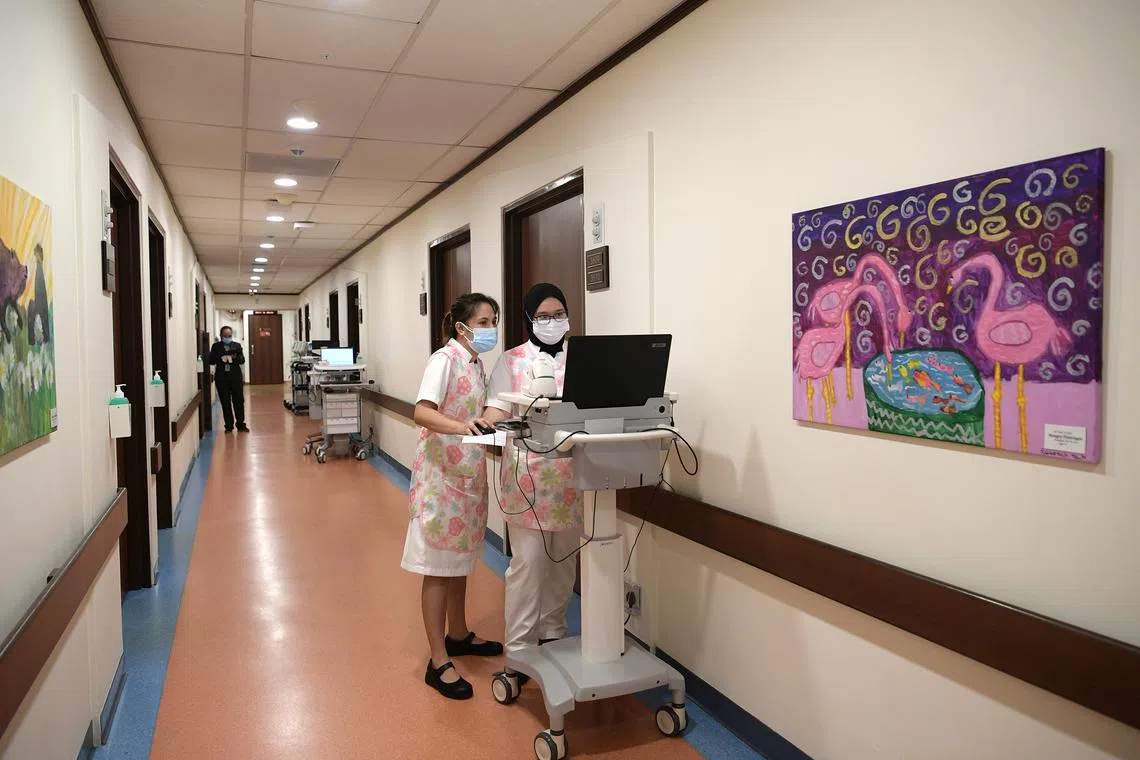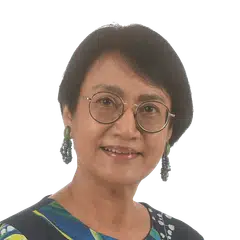Fewer people on private hospital IPs; more older people giving up their plans altogether
Sign up now: Get ST's newsletters delivered to your inbox

Nurses at Parkway East Hospital, a private healthcare facility. There was a 5 per cent drop in the proportion of people who had the highest IP tier, for coverage of treatment in private hospitals.
ST PHOTO: NG SOR LUAN
Follow topic:
SINGAPORE - The number of people with private hospital Integrated Shield Plans (IPs) has gone down, as has the proportion of older people with any type of IPs.
There was a 5 per cent drop in the proportion of people who were in the highest IP tier, for coverage of treatment in private hospitals – from 40 per cent of Singaporeans and permanent residents in 2021, to 38 per cent in 2023, the Ministry of Health (MOH) said.
Also, between 2020 and 2023, 2.2 per cent of people over the age of 60 gave up their IPs, falling back on the basic MediShield Life.
These are people who had been paying higher premiums for IPs that cover them for public hospital treatment as private patients. Many likely opted out when their premiums began to soar, and MediSave no longer covered the annual payment.
“Based on 2023 data of all IP policyholders, the proportion of those with private hospital IPs in the age group of above 60 was significantly lower, compared (with) the other age groups,” said MOH.
MediShield Life is designed to cover subsidised treatment at public hospitals. Those who prefer private care can buy additional IP coverage. More than 70 per cent have done so.
There are three tiers of IPs: The top tier covers treatments in private hospitals, which are the most expensive. The second and third tiers cover treatments at a public hospital in A and B1 classes, respectively – these are private classes where the patient is allowed to choose the attending doctor.
IP premiums are paid annually with MediSave, up to an age-based cap, with the rest of the amount paid in cash.
Premiums go up with age and tend to rise faster in the later years when people are more likely to need expensive hospital treatments. Depending on the insurer and plan, premiums can exceed $10,000 a year for those aged 80 to 90. Cash payment can kick in from around the age of 60.
When this happens, many people start taking stock of the IP they have purchased.
The most expensive IP would cost a person $323,900 over a lifetime of 100 years, according to MOH.
But while some older people are giving up their IPs, more younger people are choosing to have them. The ministry said that between 2020 and 2023, 1.1 per cent more IPs were sold to people aged 60 and younger.
On July 12, Health Minister Ong Ye Kung warned against escalating healthcare costs.
Yet, about half of patients with IP and rider protection still end up using subsidised public healthcare when hospitalised or receiving day surgery, Mr Ong noted. “These patients only needed MediShield Life and they could have saved on a lot of premiums,” he added.
The same message against insurance-fuelled runaway healthcare costs was made by Senior Minister Lee Hsien Loong on July 13. He said: “There are too many examples elsewhere of healthcare services practically at breaking point. Populations suffer from poor healthcare delivery and long wait times, or exorbitant medical bills and high insurance premiums.”
SM Lee said there is a need for “the right mix of government subsidies, medical insurance and individual co-payment, to minimise wrong incentives, perverse incentives, which would lead to unsatisfactory outcomes”.


